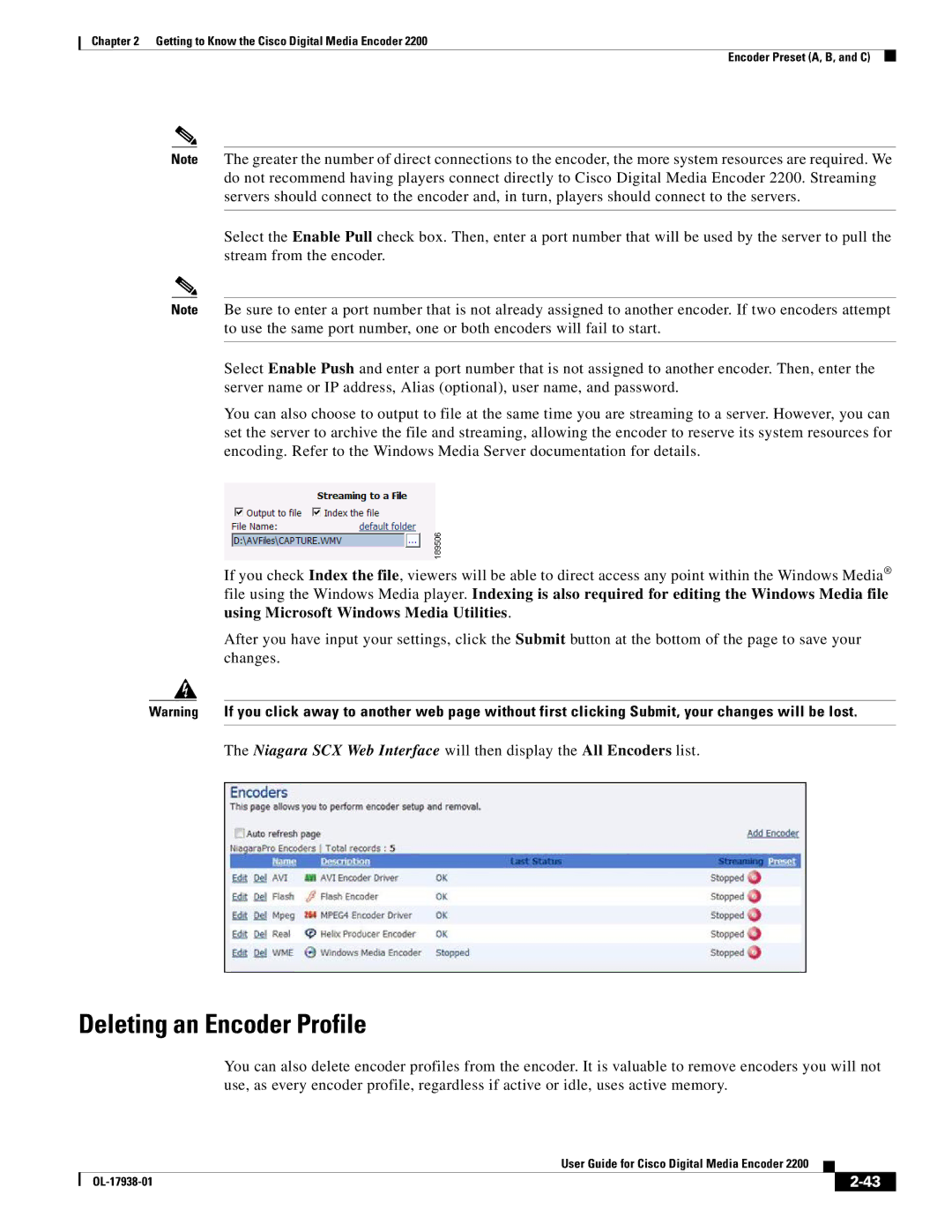
Chapter 2 Getting to Know the Cisco Digital Media Encoder 2200
Encoder Preset (A, B, and C)
Note The greater the number of direct connections to the encoder, the more system resources are required. We do not recommend having players connect directly to Cisco Digital Media Encoder 2200. Streaming servers should connect to the encoder and, in turn, players should connect to the servers.
Select the Enable Pull check box. Then, enter a port number that will be used by the server to pull the stream from the encoder.
Note Be sure to enter a port number that is not already assigned to another encoder. If two encoders attempt to use the same port number, one or both encoders will fail to start.
Select Enable Push and enter a port number that is not assigned to another encoder. Then, enter the server name or IP address, Alias (optional), user name, and password.
You can also choose to output to file at the same time you are streaming to a server. However, you can set the server to archive the file and streaming, allowing the encoder to reserve its system resources for encoding. Refer to the Windows Media Server documentation for details.
If you check Index the file, viewers will be able to direct access any point within the Windows Media® file using the Windows Media player. Indexing is also required for editing the Windows Media file
using Microsoft Windows Media Utilities.
After you have input your settings, click the Submit button at the bottom of the page to save your changes.
Warning If you click away to another web page without first clicking Submit, your changes will be lost.
The Niagara SCX Web Interface will then display the All Encoders list.
Deleting an Encoder Profile
You can also delete encoder profiles from the encoder. It is valuable to remove encoders you will not use, as every encoder profile, regardless if active or idle, uses active memory.
|
| User Guide for Cisco Digital Media Encoder 2200 |
|
| |
|
|
| |||
|
|
|
|
| |
|
|
|
| ||
